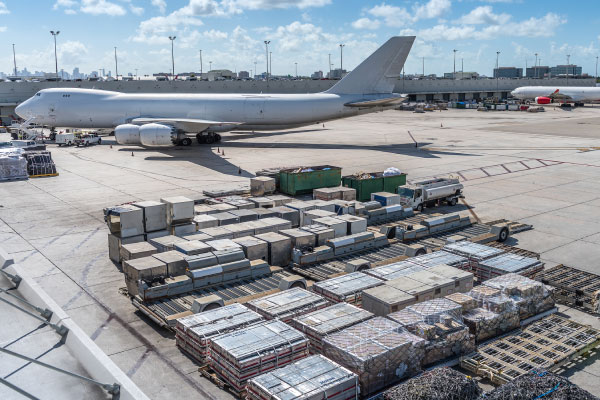
What’s driving the air cargo market right now? Tariffs, technology, staffing shortages — and plenty of uncertainty.
In the latest Logistics Management podcast, Airforwarders Association Executive Director Brandon Fried joined Group News Editor Jeff Berman to break down what’s happening across the air cargo sector.
From shifting e-commerce flows to outdated airport infrastructure, here are 5 key takeaways from the conversation:
1. Tariffs are fueling major uncertainty
The back-and-forth over U.S.-China tariffs continues to disrupt planning for forwarders and shippers. Fried said the current 90-day tariff reprieve led to a 17% increase in ocean freight rates on Pacific lanes, with air freight rates likely to follow. “This uncertainty is creating challenges for planning and figuring out what pricing is going to look like,” Fried noted.
2. De minimis changes are reshaping e-commerce flows
The removal of the de minimis exemption is adding costs, compliance burdens and causing shippers to rethink sourcing strategies. Some are shifting to U.S. warehouse models or sourcing outside China. “E-commerce is here to stay, it’s just going to look different,” Fried said.
3. Air traffic controller shortages risk new bottlenecks
Fried flagged concerns about FAA staffing shortages, with towers averaging three controllers when they should have 14. “We don’t like bottlenecks,” Fried said, warning that delays caused by controller shortages can ripple through air cargo schedules and hurt service levels.
4. Outdated airport infrastructure can’t keep up
Many U.S. airport cargo areas were built decades ago and aren’t designed for today’s freight needs, Fried said. With air cargo projected to grow 4% annually over the next 20 years, modernizing infrastructure will be key. “We sell time for a living, and we can’t afford delays due to outdated facilities,” he explained.
5. Forwarders are racing to adopt new technology
AI, automation, and cybersecurity are becoming bigger priorities for forwarders of all sizes. “This was a business that relied on Selectric typewriters for years, but we’re making up for lost time,” Fried said. Even smaller forwarders are investing in tech to improve efficiency and transparency.
Looking ahead to peak season, Fried said volumes will likely outperform 2024, but uncertainty around consumer sentiment and geopolitical risks remains high.